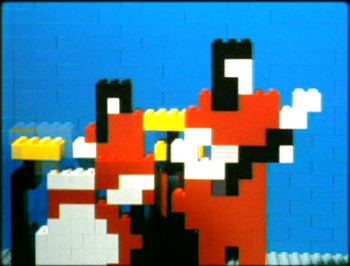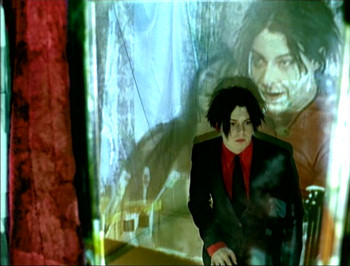 Short movies are at once the most ubiquitous and the most neglected films there are, garnering little critical appraisal as objects themselves even as they’re unavoidable in everyday life.
Short movies are at once the most ubiquitous and the most neglected films there are, garnering little critical appraisal as objects themselves even as they’re unavoidable in everyday life.
This lack of analysis is in large part a function of their mostly less-than-noble intentions. Commercials for television (reused in movie theaters and online) are 30- or 60-second movies pushing a specific product or company. Music videos are similar but longer, designed to sell CDs, downloads, other merchandise, and concert tickets. Movie trailers are condensed versions of what they’re hawking, yet they’re generally so formulaic (more than the films themselves, if that’s possible), incoherent, and artless that they rarely seem to merit further discussion.
Then there are those labors of love, short works made with the understanding that few people outside of film festivals will ever see them. They, too, are often commercial, selling the potential of their creators as suitable talents for paying projects.
Individual episodes of television shows are themselves short movies, and while they inspire detailed analysis at venues such as Television Without Pity and The House Next Door, the component parts are evaluated in the context of a whole – the season, or the entire run of the series.
And there are YouTube and its knockoffs, viral delivery systems that can turn anybody into an auteur, whether by excerpting talk-show clips or posting home video. Online-video works still feel transient and secondhand, particularly with the sound and video quality that is sacrificed for reasonable file sizes.
The point is that short films don’t get much love, whether it’s because of their crass intent, a relatively small audience, their role in serial narratives, or technological hitches.
But they can be tremendously rewarding, and oftentimes I’d rather watch a mixed bag of short movies than a solid two-hour drama.
The appeal of short films, in the coarsest formulation possible, is that their potential return on time investment is far greater than with feature films, and the risk is much lower. You can suffer an awful 10-minute film much more easily than a dreadful 100-minute movie, and the sheer variety of experiences and joys and wonders one can derive from an evening of short movies far surpasses those to be found in virtually any night spent with long-form cinema.
The short movie, of course, is nothing like a feature film, in the way that a poem is much different from a novel or even a short story, even though they use the same tools; the compactness of the form dictates scope, pacing, density, economy, urgency, vocabulary … .
Brevity presents its challenges, particularly the need to achieve impact without the benefits of accumulation that a longer running time affords. The length also makes it more difficult to build complex characters and plots.
But short-form cinema has several built-in advantages. Filmmakers can be more rigorous and daring in point-of-view, visual schemes, and sound design. Short films are also excellent vehicles for experimentation and formal innovation; new approaches can be employed and tested with much lower stakes than if they were used for a longer work.
 Some approaches are simply poorly matched to long-form content. Michel Gondry’s stop-motion Lego video for the White Stripes’ “Fell in Love with a Girl” is a brilliant grade-school idea beautifully executed, but it’s unsuitable for anything longer than a few minutes and anything more emotionally complex than a music video; the technique is cool but inexpressive. The overlaid images of another video he did for the White Stripes, “Dead Leaves and the Dirty Ground,” would be nearly impossible to follow with a narrative any more complicated than the trashing of a house.
Some approaches are simply poorly matched to long-form content. Michel Gondry’s stop-motion Lego video for the White Stripes’ “Fell in Love with a Girl” is a brilliant grade-school idea beautifully executed, but it’s unsuitable for anything longer than a few minutes and anything more emotionally complex than a music video; the technique is cool but inexpressive. The overlaid images of another video he did for the White Stripes, “Dead Leaves and the Dirty Ground,” would be nearly impossible to follow with a narrative any more complicated than the trashing of a house.
And there’s this: The baldly commercial nature of many short films makes the best ones all the more impressive: They must accomplish their artistic goals in the service of selling something, which is often at odds with purer aims.
From a critical perspective, shorts are attractive because there’s less information to digest and process; they’re typically easier to decode and analyze, and with attention focused on a smaller canvas, writing on short films is more likely to look at the effects of mechanics and minutiae – the impact of camera movement, the effect of a cut, the beauty of a single shot, the meaning of a visual motif, the feeling imparted by a single expression.
With those things in mind, we should at least pause for a moment – or a week – to give these culturally prevalent works thoughtful, serious consideration.
That’s what the “Short-Film Week” blog-a-thon is all about.

